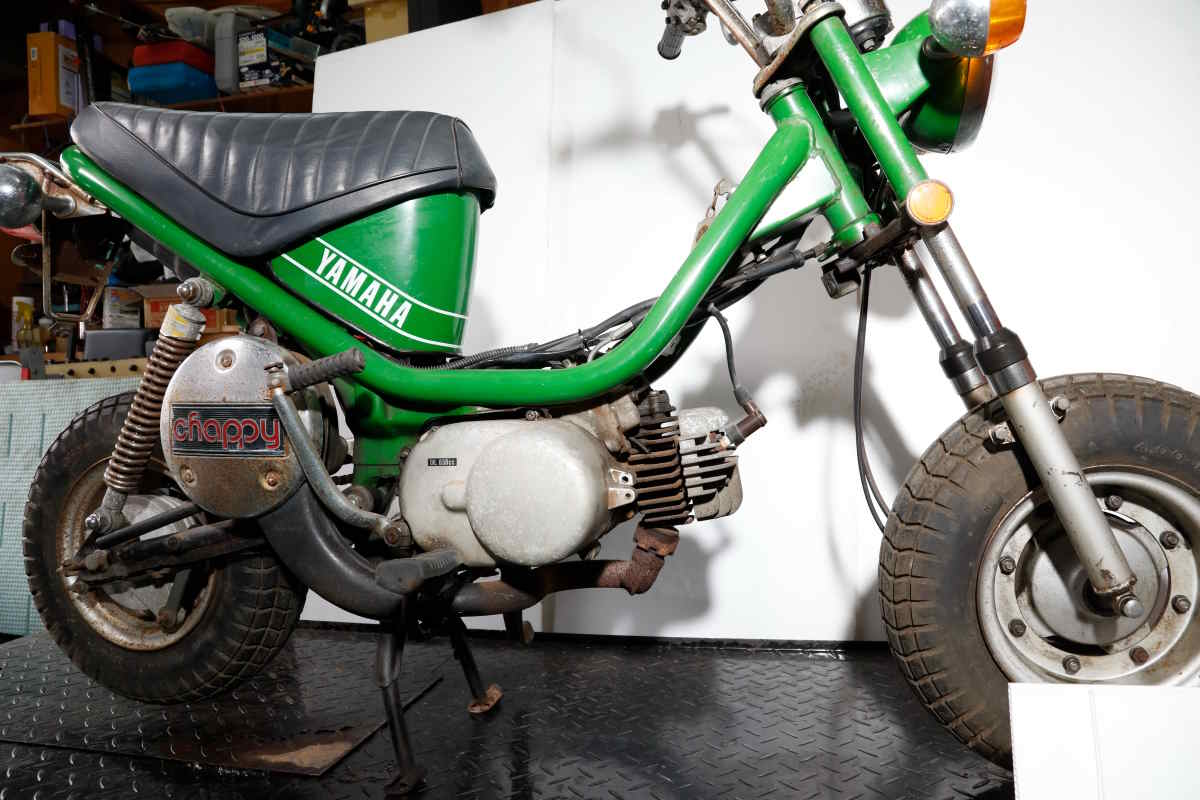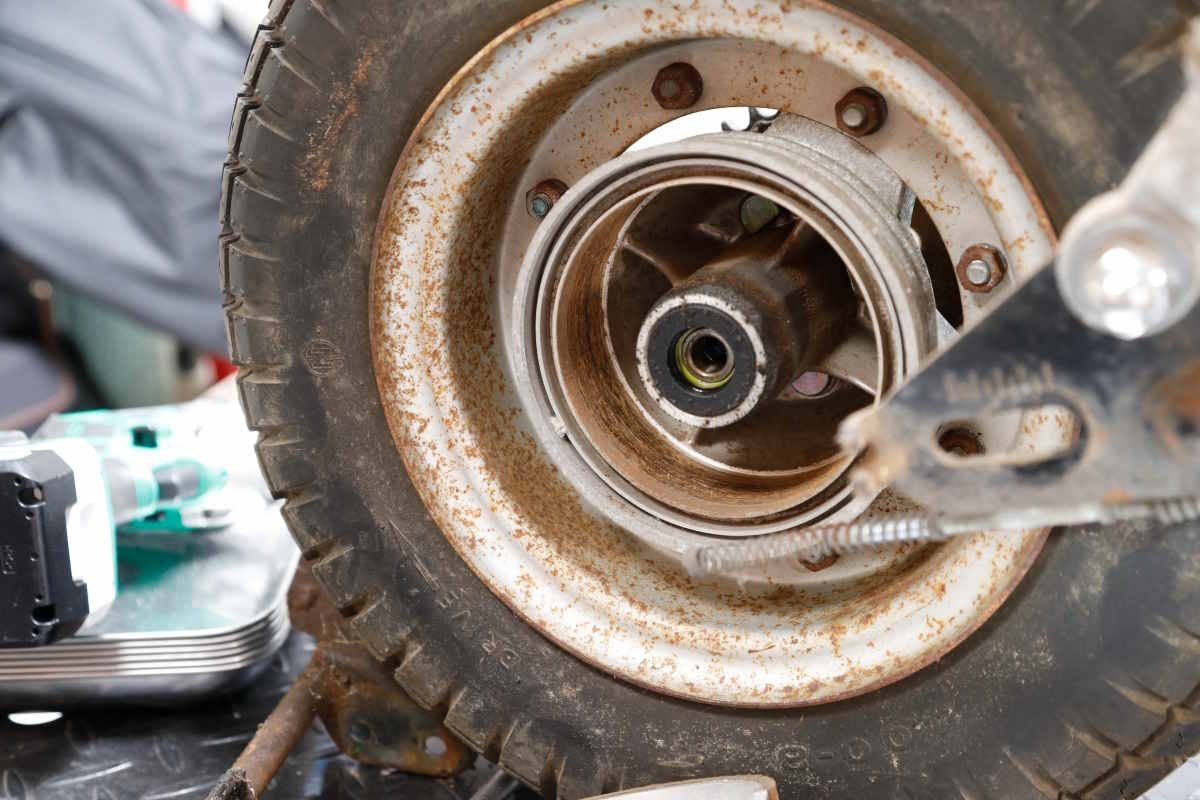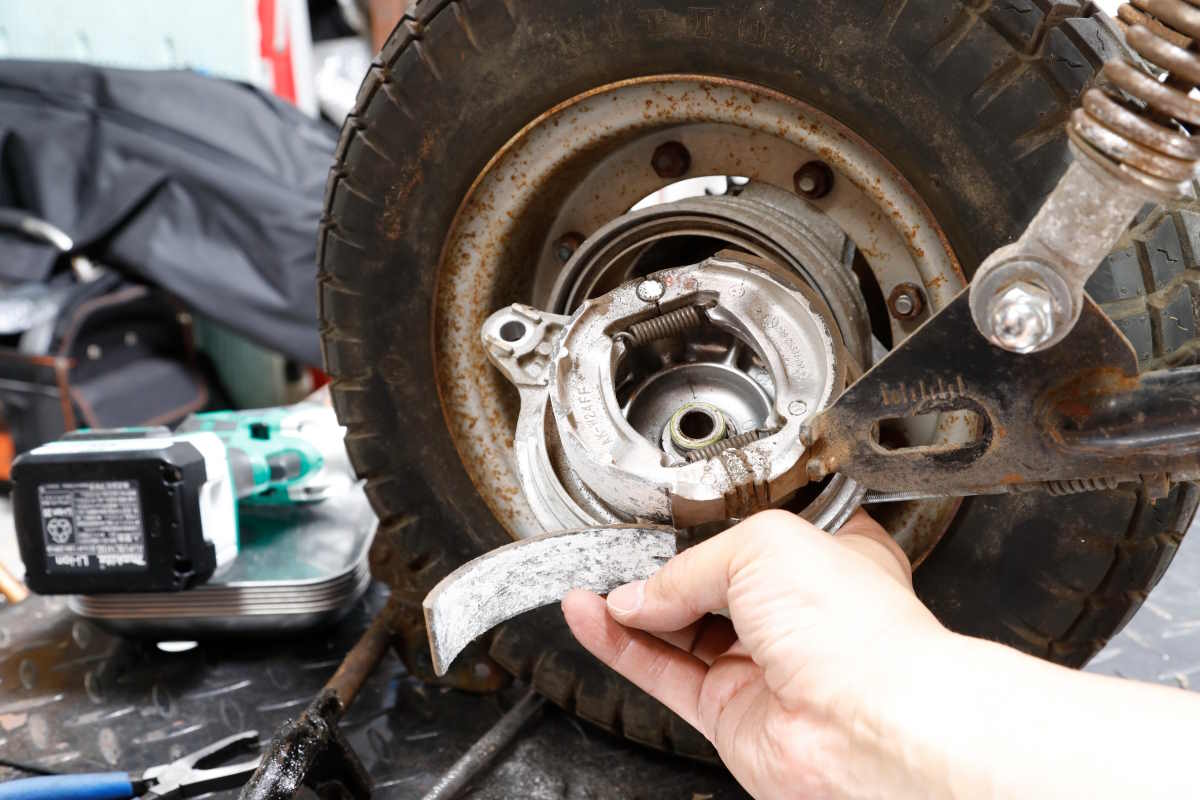Brake pads for disc brakes and brake shoes for drum brakes are composed of a metal material that serves as the foundation, to which a lining, a friction material, is bonded. Under normal usage and conditions, the linings are replaced when they become worn, but a combination of bad conditions can cause the linings to peel off from the foundation. It is very dangerous if the lining peeling occurs on drum brakes, where the condition of the brake shoes cannot be checked from the outside of the wheel, so it is important to always check the actual product when restarting a long-term immobilized vehicle.
- Brake shoes and linings are assembled by gluing them together.
- Moisture, humidity, and aging may degrade adhesive performance
Brake shoes and linings are assembled by gluing them together.


The humidity inside the cycle port, which was placed on graveled soil, varied greatly, and during the rainy season, the humidity was quite high. After more than five years of storage (close to neglect) in such conditions, rust had developed on various parts, and the brake shoes were also experiencing problems.


The red rust on the inner surface of the rear brake drum was relatively easy to remove with sandpaper polishing.
Whether drum brakes or disc brakes, continued use beyond the wear limit can lead to major problems if the foundation (back plate for disc brakes, brake shoes for drum brakes), rather than the friction material, presses against the brake rotor and brake drum. Among the friction materials of brake pads and brake shoes, the friction material of drum brakes is called lining, which is made of friction material, reinforcement material, and bonding material, molded by applying heat and then attached to the brake shoes, the foundation, with adhesives.
The characteristics and performance of the lining are determined by the composition of the materials contained in it, and users can use different linings for different levels of effectiveness and control.
Disc brake pads are similar in that friction material is attached to the back plate. When brake pads and linings are worn out and come into direct contact with the back plate and brake shoes, the rotors and drums are scraped because the friction material of the pads and linings is softer than that of the back plate and brake shoes, as a matter of course.
Moisture, humidity, and aging may degrade adhesive performance


The lining had peeled off from the brake shoes. The adhesive surfaces on both sides were covered with white corrosion powder, indicating that the adhesive had not worked for a long time. Changes in temperature and humidity during storage must have deteriorated the adhesive surfaces.
The adhesive that laminates the brake shoes and lining does not peel off easily under normal conditions and usage, of course. However, just as plastic headlight lenses may turn yellow and crusty, or tire sidewalls may develop small cracks, there are cases where the performance of the adhesive deteriorates over time or storage conditions, causing the lining to delaminate. Particularly dangerous is long-term storage in humid and dingy places. Here is an example of a bicycle that was stored in a cycle port in a gravel parking lot for about five years, where rust had developed on various parts of the body and the brake lining in one location had completely delaminated.